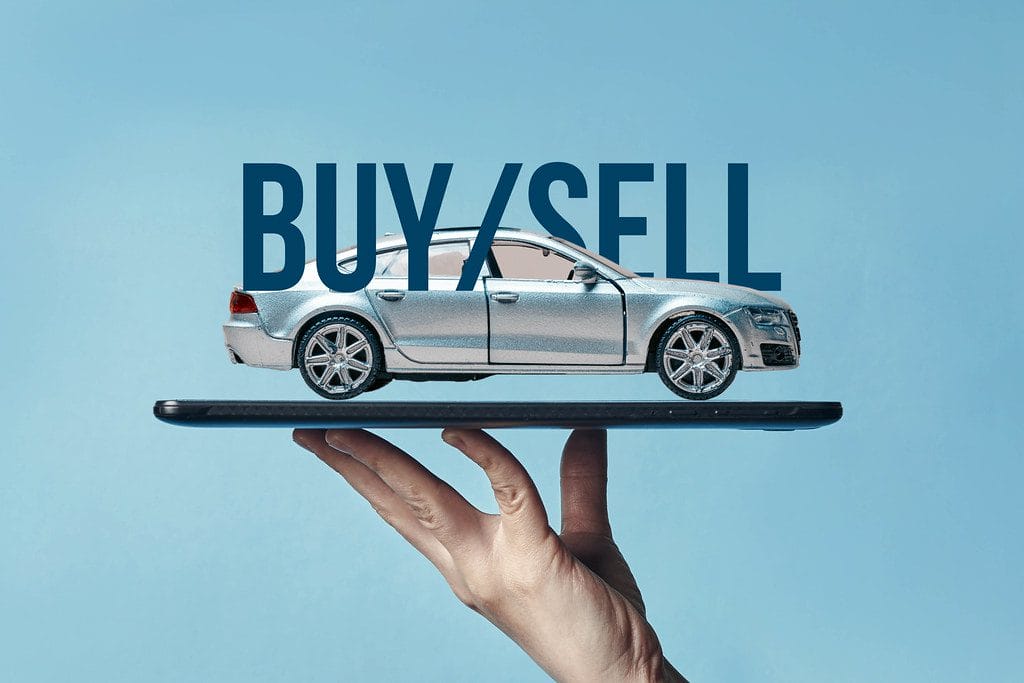
The Complete Guide to Selling Your Car
Thinking about getting a new car?
Figured out what to do with your old one yet?
One option is to offer your car as a trade-in to a dealership.
But you might make more by selling it yourself. In many cases, you can turn a profit on your old car through a few well-placed ads and a car wash.
Here’s the complete guide to selling your car so you can maximize price and minimize headache.
What to Watch Out For
Most people selling a car use a combination of flyers and online ads to reach as many potential buyers as possible. If you plan on advertising online, however, it’s important to watch out for scammers.
According to media reports, private car sellers are a favorite target of internet scam artists. In 2017, over 100 sellers were caught up in a widespread scam in the Chicago area that left them with fraudulent checks and without their vehicles.
You can protect yourself by ensuring the buyer’s payment is the real deal before you hand over the car. If a seller wishes to pay by check, make sure you feel comfortable about engaging with them. Don’t be afraid to learn a bit more about their back story and why they need the car.
You should also refuse to accept a check written out for more than the sale price of the car, as this is a red flag that indicates a scam. When scammers do this, they mail the seller a check in an amount that exceeds the sale price, then ask the seller to mail back a check with the difference. In the meantime, the original check bounces, leaving the seller with no car and missing funds.
Timeline and Price Expectations
To get an idea of how long it will take to sell your car, it helps to look at the average sales timeline reported by dealerships. In general, dealers report that cars have been sitting on their lots a bit longer than usual. In 2017, for example, the average new vehicle remained on the lot for 70 days. The trend seems to have continued in 2019, with dealers reporting sluggish sales.
Assuming you’re asking a fair price, you can expect buyers to negotiate. Be prepared for them to offer anywhere between 20 and 25 percent below your asking price. If you’ve gone weeks without an offer or the interest in your vehicle has started to wane, this is a sign you need to reduce your price.
5 Mistakes to Avoid When Selling a Car
You can maximize price and reduce stress by avoiding mistakes when selling your car. Here are five missteps to avoid.
1. Setting the Price Too High
You want the highest price possible for your car, but it’s important to be realistic. Research your vehicle and compare it to similar models to make sure your price is in line with vehicles in the same condition and class.
2. Vague Description
Potential buyers want to know as much as possible about a car before taking time to schedule an in-person meeting. If your ad’s description is vague or incomplete, people might assume you have something to hide or that you’re not a legitimate seller.
To maximize your chances of making a speedy sale, take time to write a detailed description. You should also include plenty of photos from various angles so buyers can see your car clearly.
3. Slow Inquiry Response Time
When you’re selling a car, you need to become customer service oriented. This means responding to inquiries quickly. My rule is always respond within 24 hours at the absolute latest.
Nothing kills deals like time.
Want to build a business that enables you to live YOUR Rich Life? Get my FREE guide on finding your first profitable idea.
4. Concealing Information About the Car
Be honest about your vehicle’s condition, including the mileage, its maintenance history, and the overall condition.
For example, if the A/C isn’t operational, you should clearly state that in the ad. If the car needs new brakes, be up front about it. This reduces your risk of legal troubles after the sale.
5. Dirty Condition
Give your car a deep clean.
Remove any personal belongings, shampoo the carpets, and wipe down all hard surfaces. You should also wash the outside, including the tires. An hour of work and the price of a good car wash could easily get you a few extra thousand dollars in your asking price.
7 Steps to Sell Your Car Without Any Problems
To ensure a pleasant and hassle-free sale, follow these seven steps.
1. Gather All Paperwork
First, gather all the important documents related to your vehicle. Having these documents handy ahead of time can put potential buyers’ minds at ease and shorten the amount of time between an inquiry and the close of the deal. Here are the documents you’ll need:
- Car Title – This is the legal proof that you own the car. If you still owe money on the car, you’ll have a memorandum of title instead.
- Maintenance Information – If you have kept any documentation regarding maintenance or repairs, make copies of these documents.
- Vehicle History Report – Most used car dealerships offer Carfax or similar reports to buyers. You can get a Carfax report for $39.99. If it helps you make a quick sale, the cost is well worth it.
You should also contact your local department of motor vehicles (DMV) to determine what types of documents you need to complete a sale and make a transfer. In many cases, you can download these forms from the DMV’s website so you can have them ready to go once you’re set to close the deal.
2. Set Asking Price
Next, determine your asking price. To get an accurate value, visit the Kelley Blue Book website. You can also search your car’s value on the Edmunds site. These sites will give you an idea of your vehicle’s fair market value.
3. Make Your Car Look Its Best
Home sellers strive to give their houses curb appeal. The same rule applies to cars. You don’t want potential buyers opening the door and seeing a muddy floor mat or collection of fast food cups.
Make your car shine by giving it a thorough cleaning. Wash the outside as well as the interior. Plenty of car washes offer affordable detailing services, and some even have do-it-yourself shampoo and vacuum facilities. It only costs a few dollars to make your car shine.
4. Create Eye-catching Ads
Your ads will make or break the sale process. To attract the best buyers, take time to create ads that show your vehicle in the best light. Include plenty of exterior and interior photos so buyers can see your vehicle from various angles.
You can post car ads in a variety of places. If you’re looking to advertise online, here are a few sites to consider:
- Craigslist – This is a free site that lets you post an ad without revealing your email address to the public. However, it’s important to be wary of scammers.
- Cars.com – Cars.com distributes its ads to nearly 200 newspapers and online sites. You can post an ad for free for 30 days. There is also a premium option that costs $49. At that price, you can list your car on the site for 150 days and receive a free Carfax report.
- Auto Trader – There are three packages to choose from on AutoTrader.com, and each package runs your ad for 30 days. The basic package is $25 and includes three photos. The premium package is $90 and includes 30 photos plus a bunch of other features.
5. Vet Potential Buyers
Avoid scams and dangerous situations by doing your homework on potential buyers. Many people set up a special email account just for the purpose of selling their car. This prevents spammers from flooding your regular email with bogus offers and junk mail.
Before you agree to meet with anyone in person, talk to them over the phone. Take the time to chat with them so you can get an idea of their personality and their level of seriousness. This helps you eliminate casual “window shoppers” and scammers.
6. Arrange a Test Drive
Once you’ve connected with a serious buyer, offer a test drive. Protect yourself by arranging the test drive in a public setting, such as a shopping mall parking lot or busy retail center. If you’re uncomfortable meeting a stranger alone, ask a spouse, relative, or friend to accompany you.
You should also ride along during the test drive. This ensures the buyer doesn’t drive off with your car, and it also gives you an opportunity to answer any questions the buyer might have about your vehicle.
7. Negotiate and Make the Sale
Assuming all goes well with the test drive, you can expect the buyer to make an offer. Understandably, most buyers want to get the lowest price possible, so expect potential buyers to offer a price below your asking price.
Don’t be afraid to take your time with the negotiation process. At this stage, you don’t need to feel pressured to close the deal. Instead, let the buyer make an offer. If it’s too low, let them know they need to come back with something higher.
Once you agree on a price, you can move forward with closing the deal. If you still owe money on the vehicle, you might have to sign paperwork at your bank. If you own the car outright, you can usually transfer ownership by signing off on the car’s title and filling out a bill of sale.



